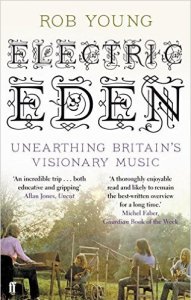The mysterious Mr Bogle arrives in Cormundy Village to perform some ‘light tutoring’ duties for fifteen-year-old Harry Longshaw, who (as with other protagonists of children’s fiction, like Marianne in Marianne Dreams and Henry in The Night-Watchmen) is out of school recovering from a fever that (like Mark in Marianne Dreams and Colin in The Secret Garden) has left him with difficulties walking. Harry and his older sister Margaret live alone (their parents being dead) at a large house called Fury Wood, which they’re about to sell, as Margaret is marrying Rupert Musgrave, a young man newly moved into the village, who has plans to revive its farms and mills with new machinery and modern methods. Harry takes an instant dislike to Mr Bogle, with his goat’s foot inkstand and coat of tabby-cat fur, and who claims to have a scholarly interest in witches. Bogle says Fury Wood is built on land where, long ago:
‘The trees were cut down and burnt, and the spring filled in; that was the usual procedure when they were mopping up witchcraft.’
When not tutoring Harry, Mr Bogle is not exactly to be found doing local research. Instead, he’s seen dancing the ancient Horn Dance in the local square, a ludicrous-looking performance (to Harry’s eyes, anyway) that for some reason fascinates the village adults, the men especially. Later, Bogle urges the village’s out-of-work men into flights of resentful nostalgia with a (surely magical) film show evoking their lost past:
‘And that old school… remember the horseshoes and hopscotch, and a week off from lessons at haymaking time? Are your own kiddies any better for their posh education? It’ll take them away from you in the end, away from the village… But that’s progress, I suppose.’
Inscribed above the fireplace in Harry’s room is a line from Virgil — ‘Arise, thou avenger to come, out of my ashes’ — which Mr Bogle says refers to the execution of the local witches. And it soon becomes obvious he not only believes the ‘avenger to come’ is himself, but that he is not merely the gentleman-scholar he seems:
‘Mr. Bogle frowned and drew the curtain behind him. He disliked the habit of swearing. People were too apt to take his own name in vain.’
I came across mention of this book while looking for reviews and information on William Rayner’s Stag Boy, and found a post at the Whistles in the Wind blog, which mentions The Visitor (released in the UK as Billy Buck, which is what some of the villagers call Mr Bogle), alongside Stag Boy and Penelope Lively’s The Wild Hunt of Hagworthy (which I reviewed here), all of which were published at the start of the 1970s, and which share a lot of common characteristics. All three, for instance, feature teen protagonists caught in a struggle between the old ways and the new in otherwise quiet English villages. In The Visitor, Rupert says of Cormundy:
‘The village is dead all right, with people out of work, and buildings standing useless and empty. But one rich man could start the ball rolling again…’
Rupert is that rich man, and it’s significant that the final action of the novel takes place before a church where, the next day, Harry’s sister Margaret (representing old village stock) is to marry the forward-thinking Rupert. (Margaret is also linked, through her flower-spotted wedding dress, to the May Queen, thus representing new life and hope in contrast to the village’s wintry despondency.) Mr Bogle, on the other hand, is set to wear the costume of antler-headed Cernunnos in his own secret revival of the Horn Dance pageant, making him yet another character in early 1970s YA fiction to assume stag’s horns, and to revive an ancient festival. Bogle plans to use that pageant, though, as a means of exacting his long-overdue revenge for the burned witches. (Which makes you wonder why he waited so long.)
In contrast to The Wild Hunt of Hagworthy and Stag Boy, where the battle between the old and new is tied up intimately with the teen protagonists’ inner struggles between childhood and adolescence, Harry of The Visitor doesn’t really have an inner struggle going on, and the story isn’t as focused on him as the Lively and Rayner books are on their central characters. In addition, the forces of paganism which, in Hagworthy and Stag Boy, are dangerous and alluring, but which also point towards valuable but little-acknowledged truths about the wider world, are here reduced to nothing more than wrongheaded forces of backwards-thinking superstition. There isn’t the same ambiguity, so The Visitor, for me, doesn’t pack the same inner tussle, the same sense of brushing against wider, weirder, darker truths. Paganism, in The Visitor (aside from the identification of Margaret with the Queen of the May), is simply deviltry by another name, and Mr Bogle, in the end, is a rather pallid Devil.









